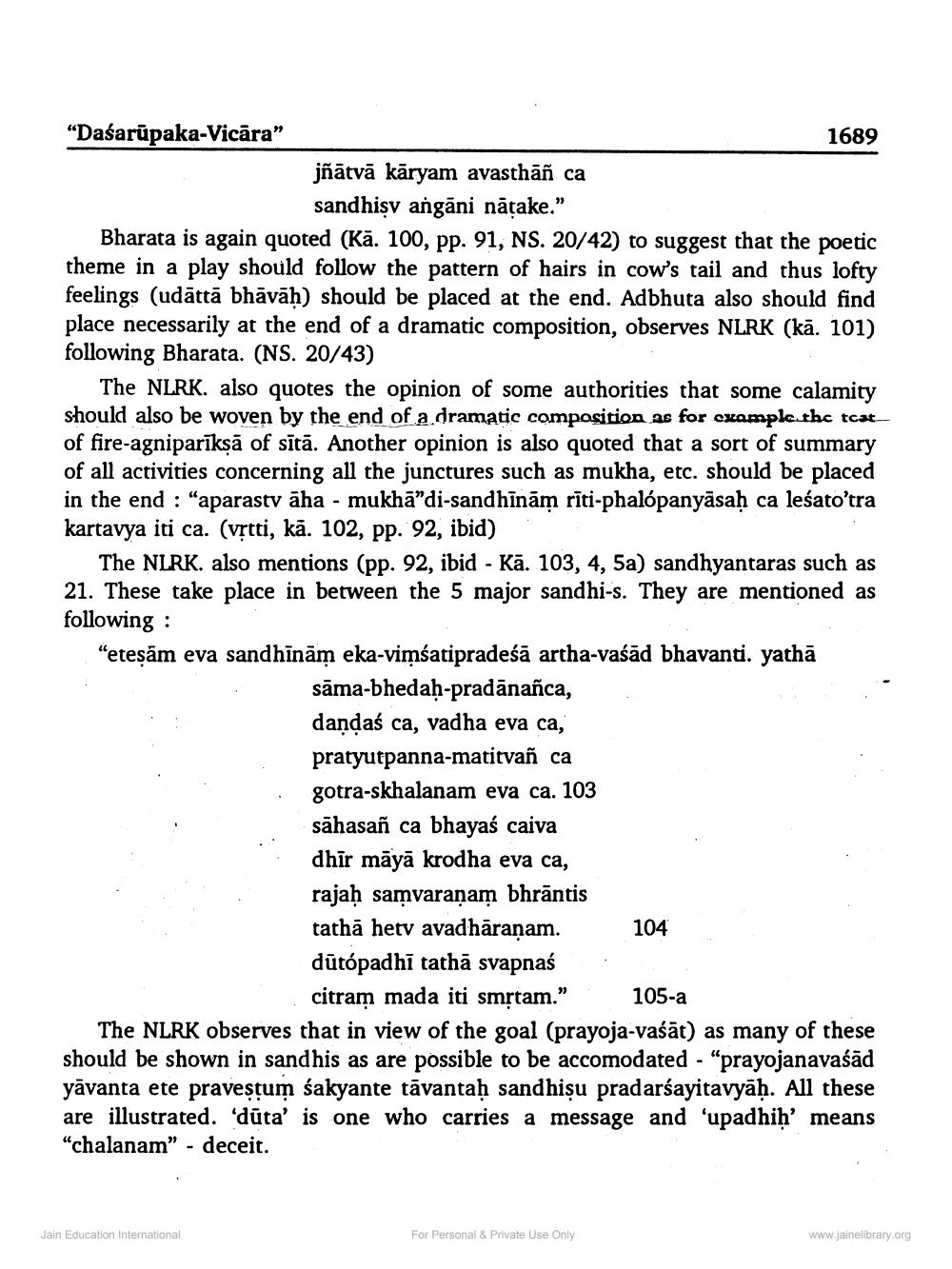________________
"Dasarūpaka-Vicăra"
1689 jñātvā kāryam avasthāñ ca
sandhişv angāni nāțake." Bharata is again quoted (Kā. 100, pp. 91, NS. 20/42) to suggest that the poetic theme in a play should follow the pattern of hairs in cow's tail and thus lofty feelings (udāttā bhāvāh) should be placed at the end. Adbhuta also should find place necessarily at the end of a dramatic composition, observes NLRK (kā. 101) following Bharata. (NS. 20/43)
The NLRK. also quotes the opinion of some authorities that some calamity should also be woven by the end of a dramatic composition as for example the tcat of fire-agniparīksā of sītā. Another opinion is also quoted that a sort of summary of all activities concerning all the junctures such as mukha, etc. should be placed in the end : "aparastv āha - mukhā"di-sandhīnām rīti-phalopanyāsah ca leśato'tra kartavya iti ca. (vștti, kā. 102, pp. 92, ibid)
The NLRK. also mentions (pp. 92, ibid - Kā. 103, 4, 5a) sandhyantaras such as 21. These take place in between the 5 major sandhi-s. They are me following: "eteşām eva sandhīnām eka-vimsatipradeśā artha-vaśād bhavanti. yathā
sāma-bhedah-pradānañca, dandaś ca, vadha eva ca, pratyutpanna-matitvañ ca gotra-skhalanam eva ca. 103 sāhasañ ca bhayaś caiva dhīr māyā krodha eva ca, rajah samvaranam bhrāntis tathā herv avadhāranam. 104 dūtópadhi tathā svapnaś
citram mada iti smộtam." 105-a The NLRK observes that in view of the goal (prayoja-vaśāt) as many of these should be shown in sandhis as are possible to be accomodated - "prayojanavaśād
e pravestum śakyante tāvantah sandhişu pradarśayitavyāh. All these are illustrated. dūta' is one who carries a message and 'upadhih' means "chalanam" - deceit.
Jain Education International
For Personal & Private Use Only
www.jainelibrary.org




